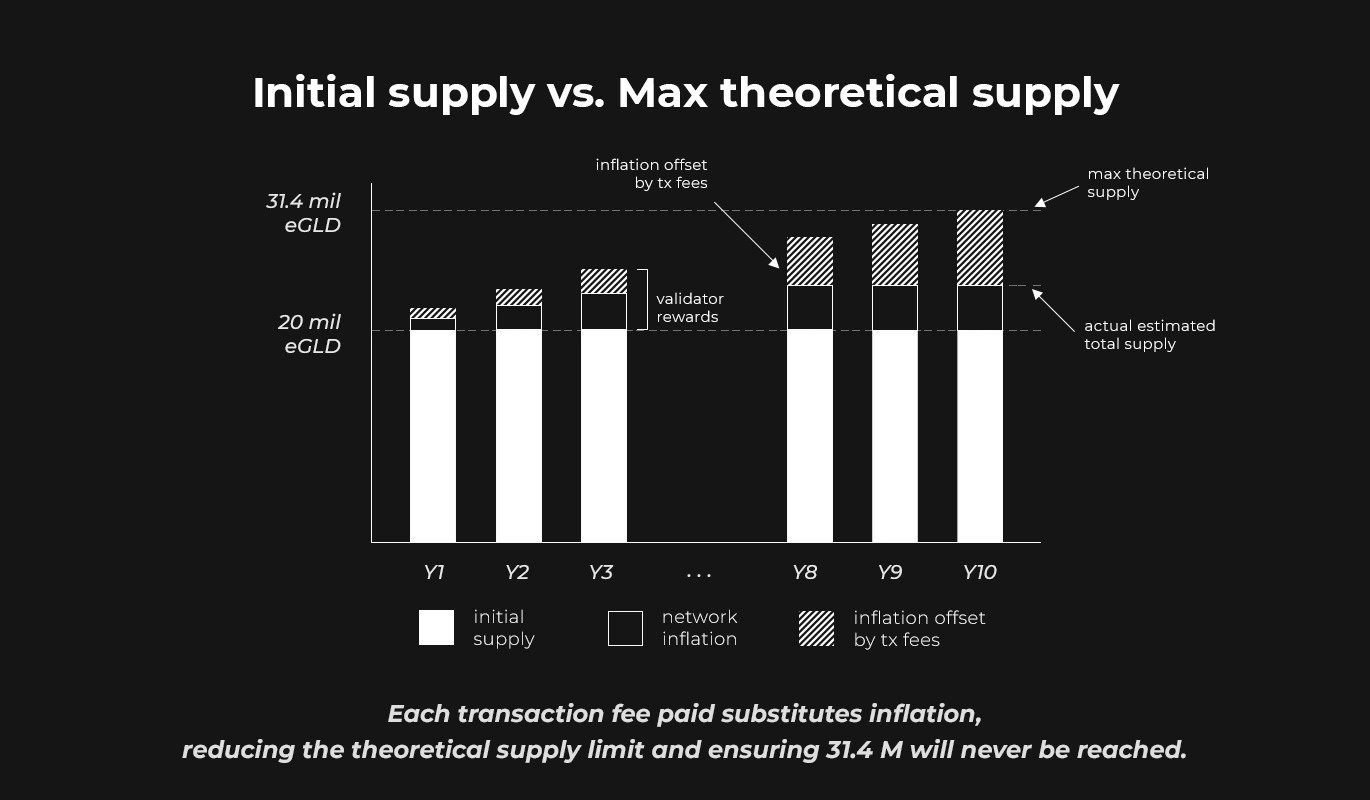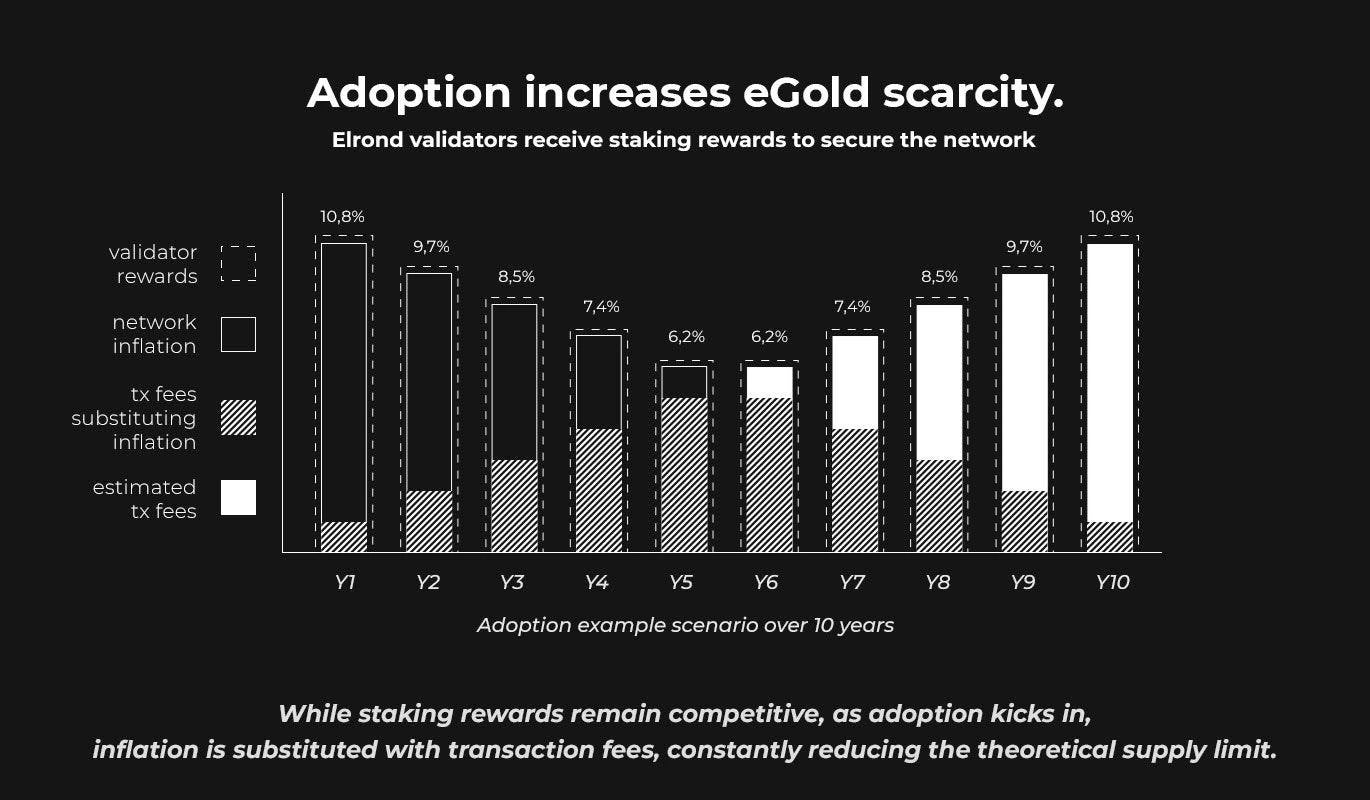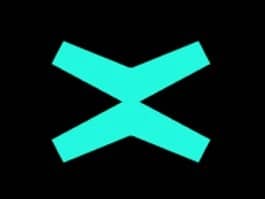Subscribe to wiki
Share wiki
Bookmark
EGLD
EGLD
EGLD (eGold) serves as the native digital currency within the MultiversX blockchain ecosystem, facilitating transactions, token management, and smart contract deployment. [1]
Overview
EGLD launched through an initial coin offering (ICO) on July 2nd, 2019, raising $5.15 million on its launch day. As the native coin of the MultiversX network, EGLD serves multiple purposes within the blockchain economy. [1][2]
EGLD facilitates various operations, including value and asset transfers, token creation and management, and smart contract deployment. Validators, the internet computers that secure the network and contribute to consensus, are rewarded with EGLD for their contributions to network security and consensus. This digital economy revolves around the utility and functionality of the EGLD token, promoting its adoption and integration within the MultiversX ecosystem. [1][3]
Staking
Staking is an integral aspect of the eGold (EGLD) ecosystem, providing participants with opportunities to contribute to network security and earn rewards in return. By staking their EGLD tokens, users actively participate in the consensus mechanism of the MultiversX blockchain, ensuring the integrity and stability of the network. [3]
When individuals stake their EGLD, they essentially delegate their tokens to validators, who are responsible for validating transactions, securing the network, and maintaining consensus. Validators play a crucial role in the network's operations and are selected based on their reputation, performance, and stake size. [3]
Staking EGLD not only provides users with the opportunity to earn rewards but also enables active participation in the network's governance. EGLD holders have the ability to vote on important protocol upgrades, parameter changes, and other governance proposals. This democratic process allows participants to have a say in the development and direction of the MultiversX blockchain. [3]
Un-staking
Unstaking EGLD allows users to retrieve their staked tokens after the lock-up period expires. The unstaking process typically involves a waiting period, during which the tokens are gradually released back to the staker's wallet. This waiting period ensures network security and prevents malicious actions. [4]
Bonding
In addition to staking, users have the option to bond their EGLD tokens. Bonding involves a longer lock-up period and is typically chosen by users who have a long-term commitment to the network. Bonded tokens contribute to the overall security of the network and provide stability to the consensus algorithm. There is a 10 day unbonding period, after which the node is able to retrieve the amount staked. [4]
Tokenomics
The theoretical maximum supply of EGLD is 31,415,926 coins. During the bootstrapping phase of the MultiversX blockchain, 20,000,000 EGLD coins were initially minted. Over a span of 10 years, additional EGLD coins gradually enter circulation until the maximum limit is reached. [5]


See something wrong?
